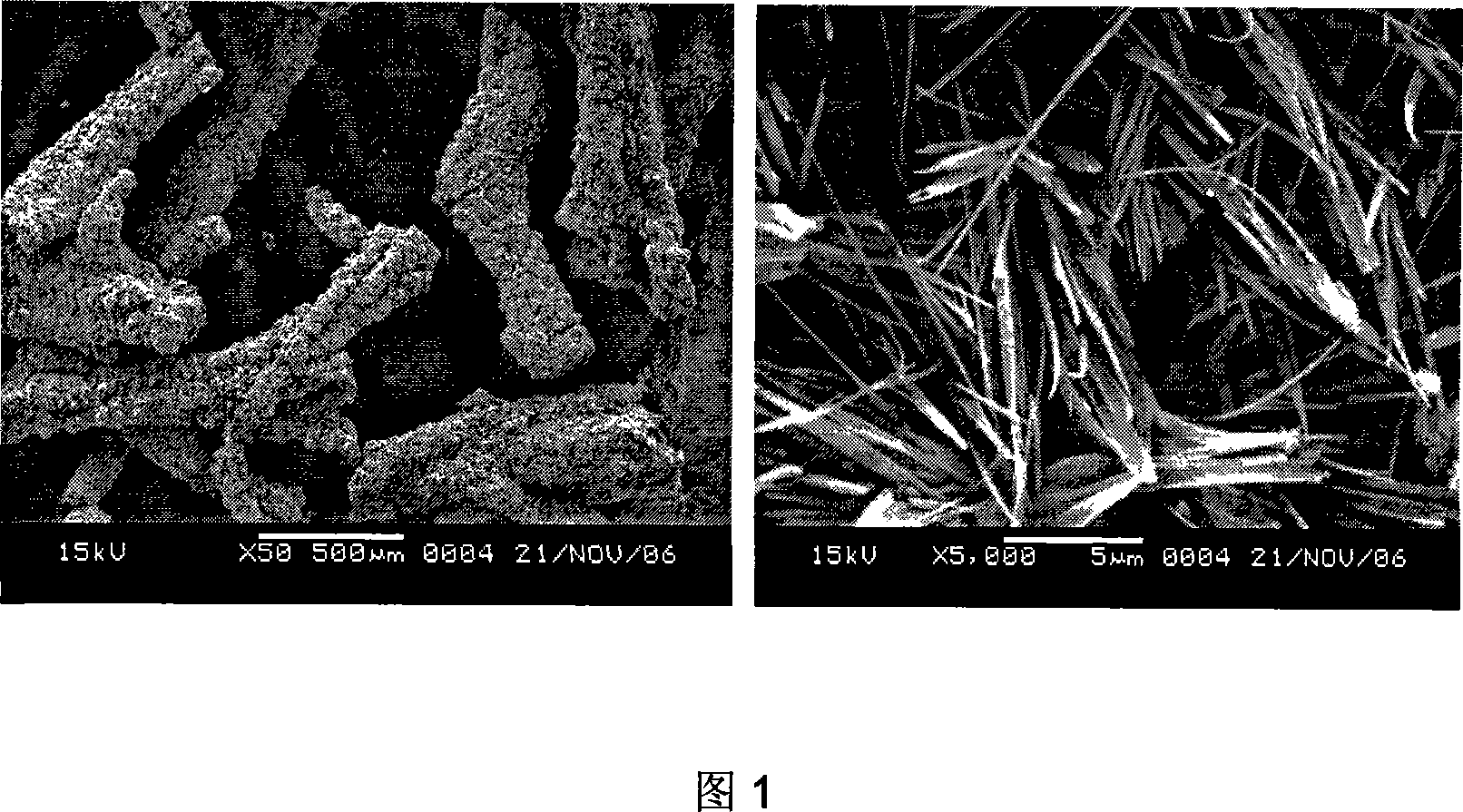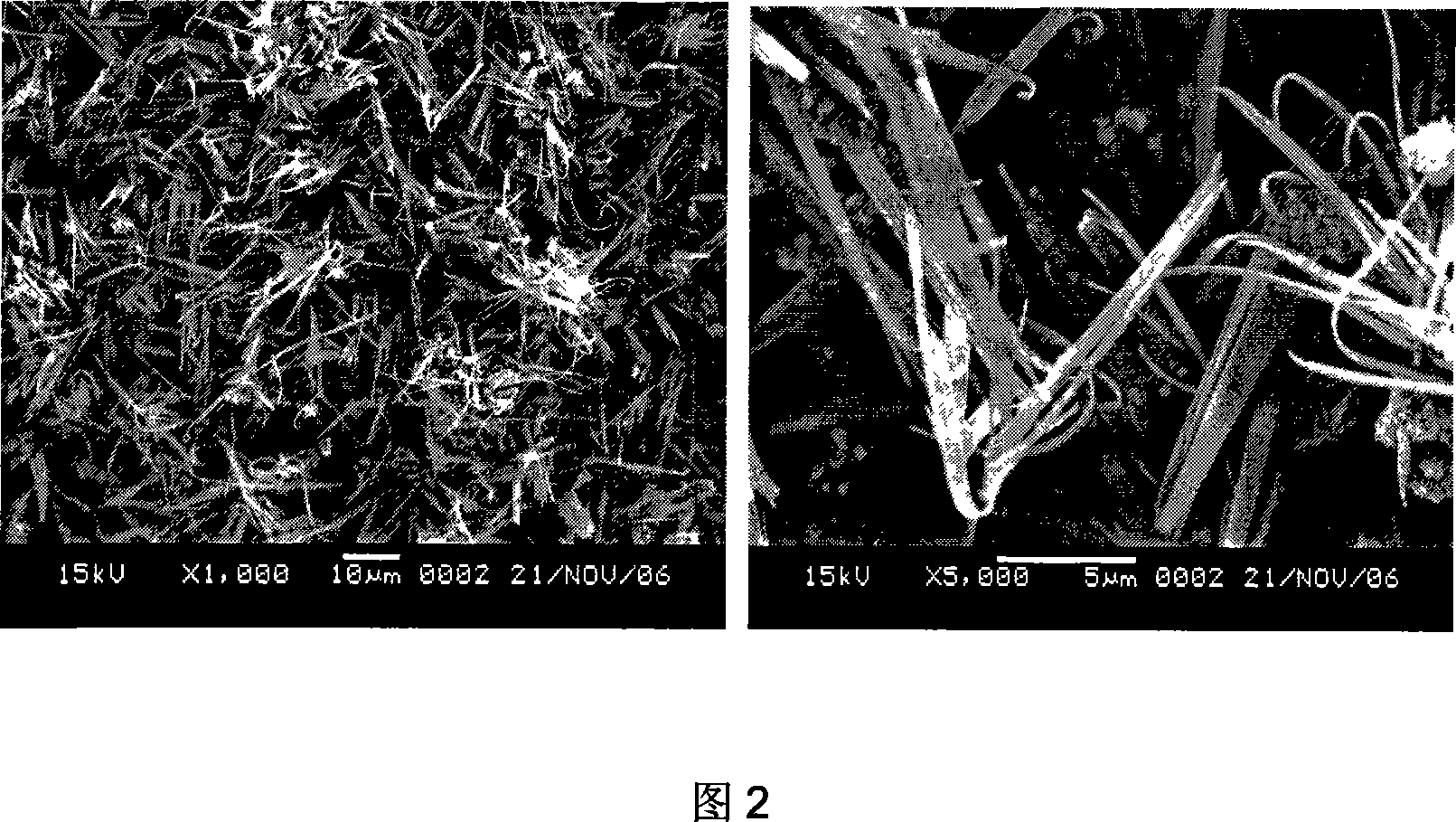Lignin-base nano carbon fibre and preparation method thereof
A nano-carbon fiber and lignin-based technology, applied in the field of nano-carbon fiber and its preparation, can solve the problems of difficult mass production of nano-carbon fiber
- Summary
- Abstract
- Description
- Claims
- Application Information
AI Technical Summary
Problems solved by technology
Method used
Image
Examples
Embodiment 1
[0018] Alkali lignin powder and polybutylene terephthalate were pre-crystallized in a drying oven for 8h at a temperature of 80°C, and the alkali lignin powder and polybutylene terephthalate were mixed in a ratio of 25 / 75 (mass ratio), put it into a vacuum drying oven and dry for 48h at a temperature of 120°C. Blending and banburying in a twin-screw blender, slicing, and obtaining blended slicing. Blended fibers are obtained by melt spinning. It was placed in a protective atmosphere furnace and pre-oxidized in air at a heating rate of 3°C / min to 250°C for 1 hour. Carbonization was carried out under the protection of nitrogen gas flow. The heating rate is 3°C / min, the temperature is raised to 1000°C, and the carbonization process is 3 hours. Cool to room temperature to obtain carbon nanofibers. SEM analysis showed ( FIGS. 1 and 2 ) that the obtained carbon nanofibers had a diameter of 50-200 nm and a length of 5-10 μm.
Embodiment 2
[0020] Alkali lignin powder and polypropylene were pre-crystallized in a drying oven for 8 hours at a temperature of 100°C. The alkali lignin powder and polypropylene were taken in a ratio of 25 / 75 (mass ratio), and dried in a vacuum drying oven for 48 hours at a temperature of 150°C. Blending and banburying in a twin-screw blender, slicing, and obtaining blended slicing. Blended fibers are obtained by melt spinning. It was placed in a protective atmosphere furnace and pre-oxidized in air at a heating rate of 3°C / min to 200°C for 3 hours. Carbonization was carried out under the protection of nitrogen gas flow. The heating rate is 3°C / min, the temperature is raised to 1000°C, and the carbonization process is 5 hours. Cool to room temperature to obtain carbon nanofibers. The obtained carbon nanofibers have a diameter of 50-200 nm and a length of 5-10 μm.
PUM
| Property | Measurement | Unit |
|---|---|---|
| Diameter | aaaaa | aaaaa |
| Length | aaaaa | aaaaa |
| Diameter | aaaaa | aaaaa |
Abstract
Description
Claims
Application Information
 Login to View More
Login to View More - R&D
- Intellectual Property
- Life Sciences
- Materials
- Tech Scout
- Unparalleled Data Quality
- Higher Quality Content
- 60% Fewer Hallucinations
Browse by: Latest US Patents, China's latest patents, Technical Efficacy Thesaurus, Application Domain, Technology Topic, Popular Technical Reports.
© 2025 PatSnap. All rights reserved.Legal|Privacy policy|Modern Slavery Act Transparency Statement|Sitemap|About US| Contact US: help@patsnap.com


